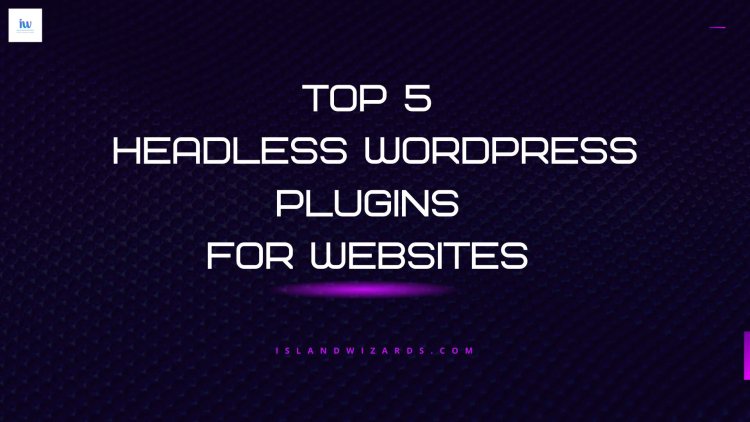Top 5 Headless WordPress Plugins for Websites | Islandwizards
"Discover the top plugins for optimizing blog management in a headless WordPress setup. Learn how to enhance content delivery, SEO, and navigation with these must-have tools."
Share this Post to earn Money ( Upto ₹100 per 1000 Views )

Headless WordPress is rapidly becoming the go-to solution for developers who want a flexible, scalable content management system. It decouples the front-end and back-end, allowing you to deliver content across multiple platforms while maintaining fast, high-performing websites. For those looking to enhance their blogging experience with headless WordPress, plugins play a crucial role in streamlining workflows and expanding functionality.
At Island Wizards, we specialize in developing headless WordPress solutions that are tailored to meet your business needs. Here are the top 5 headless WordPress plugins you need to know about for effective blog posting and content management.
1. WPGraphQL
WPGraphQL is an essential plugin for headless WordPress development. It turns your WordPress data into a GraphQL API, enabling seamless integration between WordPress and your front-end frameworks, such as React or Vue.js. For blog posting, this plugin provides fast, efficient queries that pull only the data you need. The flexibility of GraphQL means you can create custom queries, making it easier to manage blog content across multiple platforms.
2. ACF to REST API
Advanced Custom Fields (ACF) is a popular WordPress plugin that allows you to add custom fields to your WordPress content. By installing the ACF to REST API plugin, you can expose your custom fields via the WordPress REST API, making it easier to manage rich content in your headless environment. This plugin is perfect for adding unique custom fields to blog posts, improving the overall content creation experience.
3. Headless Mode
If you're running a completely decoupled website, Headless Mode is a must-have plugin. It disables the default WordPress front-end so your headless setup can rely entirely on a front-end framework like Gatsby or Next.js. For bloggers using a headless CMS, this plugin ensures that only the content management functionalities of WordPress are accessible, while leaving the front-end entirely to your chosen JavaScript framework.
4. WP REST API Menus
For those building headless WordPress websites, managing navigation menus can be a challenge. The WP REST API Menus plugin solves this problem by exposing WordPress menus via the REST API, making it easier to create and manage dynamic menus in a headless environment. This is particularly helpful for blog-heavy websites where navigation and user experience are key to driving traffic and engagement.
5. Yoast SEO for Headless
Yoast SEO is one of the most trusted plugins for optimizing WordPress content for search engines. By pairing it with a headless WordPress setup, you can still take advantage of its powerful SEO tools. The Yoast SEO REST API plugin exposes all SEO-related data via the REST API, ensuring that even in a headless configuration, your blog content remains optimized for search engine rankings.
Conclusion
Choosing the right plugins is crucial for any headless WordPress setup, particularly when it comes to managing and posting blogs. At Island Wizards, we help businesses build and optimize their headless WordPress platforms, ensuring that they run efficiently and deliver top-notch performance across all channels. Whether you’re looking to streamline blog content management, improve SEO, or enhance user navigation, these plugins will help you get the most out of your headless WordPress site.
Explore more about Islandwizards…
https://islandwizards.com/blogs/difference-between-webflow-and-wordpre..
https://islandwizards.com/blogs/tag/ecommerce/















